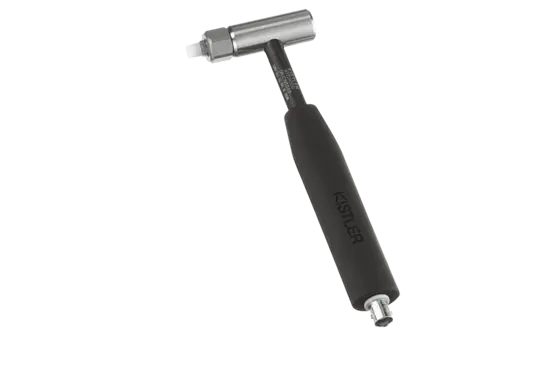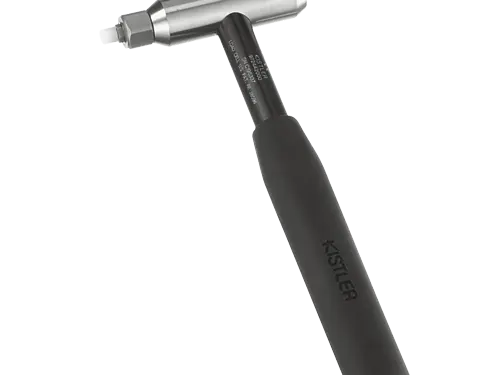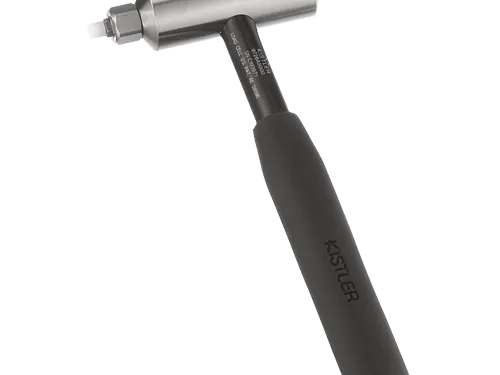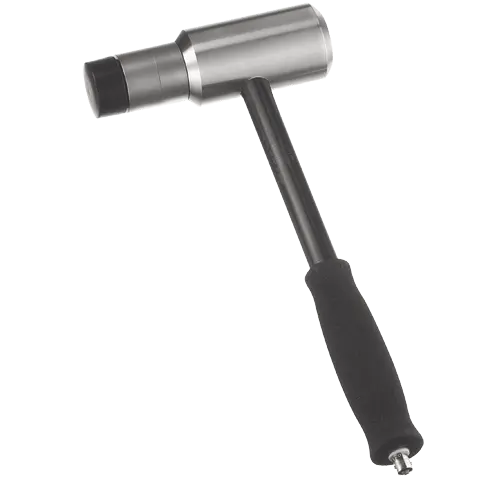What is an impact hammer?
An impact hammer is a hammer equipped with a piezoelectric force sensor and serves to stimulate a structure that is to be examined. Various hard tips made of steel, different plastics and rubber of varying hardness can be mounted to the force sensor; each of these tips stimulates different frequency spectra.





